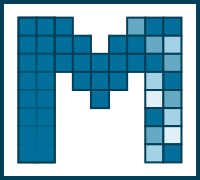
House of Quality
Quality Function Deployment (QFD), HoQ
In the course of the method of QFD, the House of Quality can be helpful to transfer customer requirements to a product's qualitative and technical features. The starting point for the HoQ is a market analysis in the form of a customer survey. Results from the HoQ used during product planning are prioritized product features as well as a comparison of the product with its competitors. In addition, conflicts of objectives between the individual features required are highlighted.

Procedure
- Recording customer requests: tools for market analysis and customer surveys help collecting the most important features of a product.
- Weighing of customer requests: The relative weight of each request is assigned through customer surveys.
- Deriving technical features: the collected customer requests are transformed into technical features that need to meet specific requirements and be if possible quantifiable. Each feature needs to be formulate neutrally without giving away a preference for the development direction.
- Preferred direction of variation for the quality feature: To include the quality of each feature, the preferred direction of variation is set.
- Dependancy between technical features: especially with complex problems it is important to clarify possible dependencies between technical specifications to disclose any complementary, neutral or conflictual correlations. The "roof" of the HoQ shows if two features are related and if so, to what extent (very negative, negative, no relation, positive, very positive)
- Correlation between customer requests and product features: This step systematically examines the connection between customer requests and product features. It is checked and documented if there is a correlation between request and feature and to what extent (no connection, weak, medium, strong). There is a choice between using a linear scale (eg. 0,1,2,3) or a progressive scale (eg. 0,1,3,9).
- Evaluation of technical features based on their importance for fulfilling customer requests: a feature's importance for the customer is calculated by multiplying the factors in the correlation matrix with the respective weighting and then summarizing column by column. By referring to the sum of the calculated numbers, one can show the relative importance of each feature.
- Quantifying of technical specifications: the technical features are specified further through quantifiable measuring criteria eg. weight [kg]. Customers that use the product in development for investment purposes generally have very specific idea of how individual requirements are to be implemented.
- Difficulty in complying with requirements: Every defined requirement is fitted with a level of difficulty for its implementation.
- Competitive analysis from the perspective of customers and the manufacturer: if there already exists a similar type of product from the company, it should be used as basis for a comparison with the most important competitors regarding the compliance with customer requests. If there are competing products available, it is useful to compare them to your own product. Customer requests that have a very high priority should be implemented in a way superior to the competition's products.
Strengths and weaknesses
|
Strengths
|
Weaknesses
|
- development period is shortened
- information and communication is improved
- supports group-oriented approach
- reduces number of changes made afterwards
- early recognition of competitiveness of product
- customer-oriented product development
- continuity of method
- preventive method
|
- great effort regarding time, personnel, costs, planning
- risk of complexity ( can be partially eliminated through IT)
- risk of translation errors when turning formulated customer requests into technical speech
|







